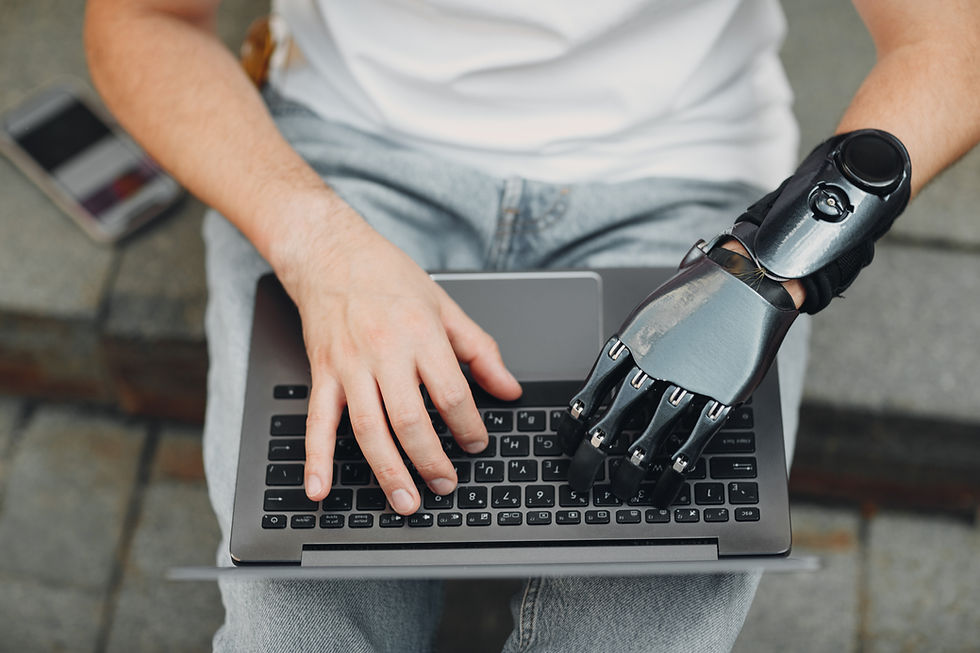Reimagining Schooling with Knowledgeopia: Creating Synergy Between Teachers, Students, and Parents
- Med Achievers
- Dec 3, 2024
- 3 min read

In an era where technology is reshaping every aspect of our lives, education systems are also embracing the digital transformation to provide enriched learning experiences. However, there is a fine line between leveraging technology to enhance education and overburdening students with screen time at the cost of physical and social development. Knowledgeopia, a global knowledge exchange platform by MedAchievers, is redefining schooling by integrating technology thoughtfully to foster collaboration between teachers, students, and parents while maintaining a balanced approach to student well-being.
The Knowledgeopia Vision: A Better Tomorrow for Schooling
Knowledgeopia is not just a platform—it is a comprehensive ecosystem designed to empower schools, enhance teacher-student engagement, and involve parents in their child’s academic journey. Here’s how Knowledgeopia aims to make schools a better place for students:
1. Enabling Seamless Collaboration Through Technology
At its core, Knowledgeopia connects teachers, students, and parents through a unified platform that bridges communication gaps:
Real-Time Updates: Teachers can share updates on class schedules, assignments, and performance reports, ensuring parents stay informed about their child’s progress.
Parent-Teacher Interaction: Scheduled meetings and collaborative tools enable parents and teachers to work together in shaping a child’s learning journey.
Student-Centered Feedback: Teachers can provide personalized feedback, and students can track their progress, setting clear goals for improvement.
This synergy ensures that everyone involved in a child’s education is aligned and proactive.
2. Balanced Use of Technology for Enhanced Learning
While technology can enhance education, Knowledgeopia ensures it doesn’t overwhelm students or replace essential physical activities:
Interactive Learning Tools: Gamified lessons, virtual experiments, and AI-driven personalized learning paths engage students without extended screen time.
Offline Integration: Activities like project-based learning, workshops, and community events are designed to complement digital resources, promoting holistic growth.
Minimal Screen Time for Younger Students: Age-appropriate modules ensure that technology use is measured and balanced.
By focusing on hybrid education models, Knowledgeopia integrates the best of technology with traditional teaching methods.
3. Encouraging Physical Activity and Holistic Development
Knowledgeopia recognizes the importance of physical health and extracurricular development in a student’s life:
Activity-Linked Learning: Incorporating sports, arts, and other physical activities into the learning process helps students retain knowledge better while staying active.
Digital Monitoring of Physical Progress: Teachers and parents can track physical activity milestones, ensuring students maintain a healthy balance between academics and physical growth.
Community Engagement: Events like science fairs, sports days, and cultural programs encourage students to participate actively beyond the classroom.
This approach ensures that students grow not just academically but also physically and emotionally.
4. Personalized Learning Journeys for Every Student
Every student is unique, and Knowledgeopia’s technology enables personalized learning experiences:
AI-Driven Insights: Adaptive learning algorithms identify each student’s strengths and areas for improvement, tailoring content to suit their needs.
Goal-Oriented Learning: Students can set academic and extracurricular goals, with teachers and parents guiding them along the way.
Access to Global Knowledge: Through Knowledgeopia’s vast network of global experts, students gain exposure to diverse perspectives and real-world applications of their learning.
This personalized approach empowers students to take ownership of their education while ensuring they receive the support they need.
5. Strengthening the Teacher’s Role in Education
Technology in schools often sparks concerns about replacing the teacher’s role. Knowledgeopia does the opposite—it enhances the teacher’s ability to deliver quality education:
Advanced Teaching Resources: Teachers gain access to a vast repository of global best practices, tools, and methodologies to improve classroom instruction.
Automated Administrative Tasks: By reducing the administrative workload, Knowledgeopia allows teachers to focus on student development.
Professional Development: Teachers can upskill through courses and certifications offered on the platform, staying ahead of educational trends.
6. Building an Inclusive and Supportive School Community
At the heart of Knowledgeopia’s vision is the creation of an inclusive school environment:
Collaborative Decision-Making: Teachers, parents, and students can contribute ideas and suggestions, ensuring a student-focused approach.
Support for Diverse Learners: Customized programs cater to students with different learning styles and needs, promoting inclusivity.
Global Exposure: Students and teachers can connect with international institutions and experts, broadening their horizons and fostering a global mindset.
Conclusion: A Future-Ready Schooling Experience
Knowledgeopia brings together the best of technology and human connection to create a learning environment that is engaging, inclusive, and balanced. By fostering collaboration, enhancing personalized education, and prioritizing physical well-being, Knowledgeopia ensures that students not only excel academically but also develop into well-rounded individuals.
The synergy it creates between teachers, students, and parents paves the way for a future where education is not just a means to an end but a journey of exploration, growth, and success. With Knowledgeopia, schools can truly become better places for students to thrive.
Are you ready to revolutionize schooling with Knowledgeopia? The future of education begins now!




Comments